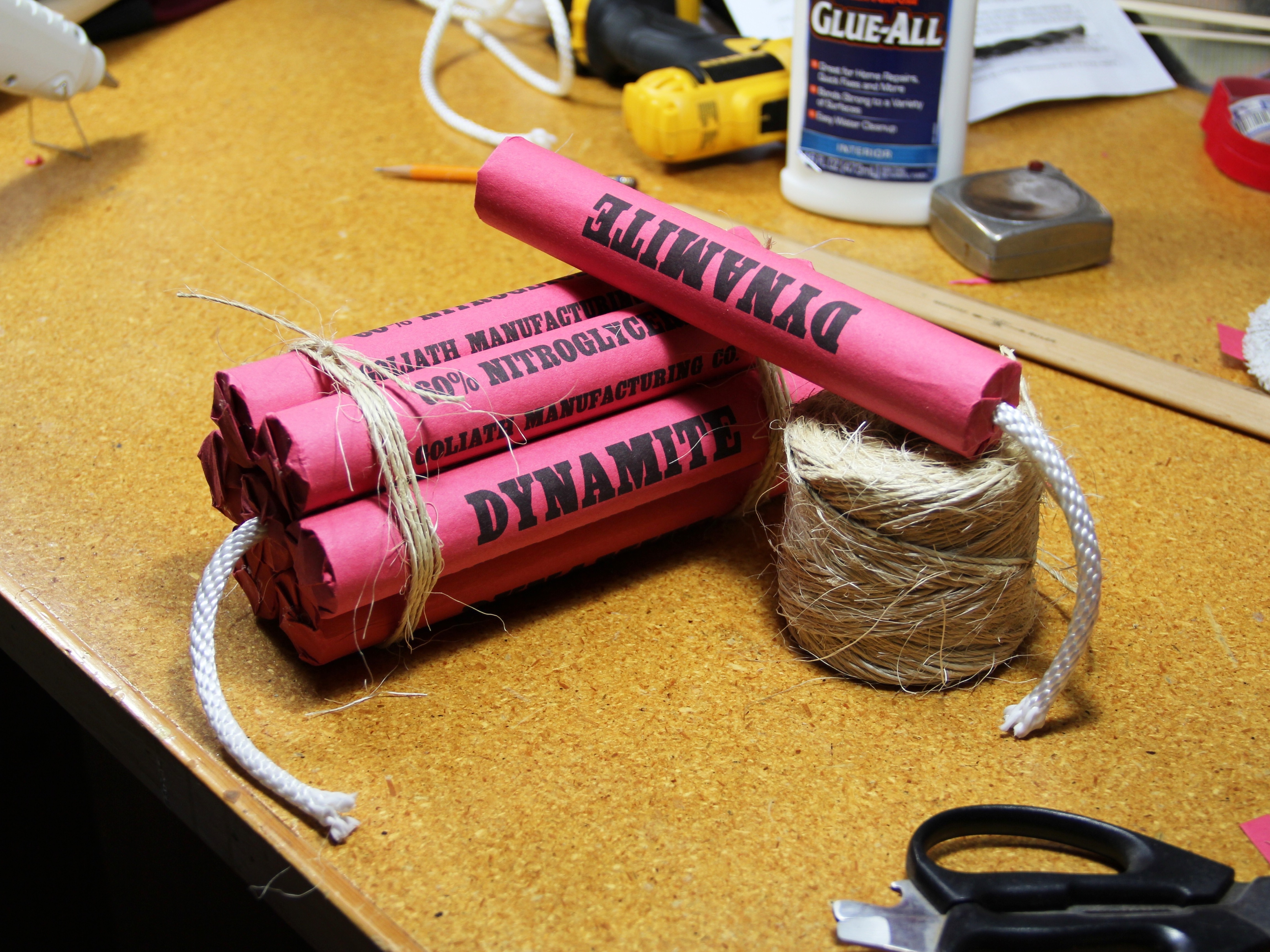I work as a photographer at an “old-time” photo studio. The most popular theme we offer is the Wild West, and we have the usual selection of props for the period: guns, whiskey bottles, money bags, playing cards and so on. The other day I decided that it would be fun to have some sticks of dynamite as well.
I did a Google image search to find out what dynamite typically looks like and found that its appearance takes a number of different forms depending on the period, manufacturer, etc., so I picked one that is fairly stereotypical.
Dynamite was invented by the Swedish chemist Alfred Nobel and patented in 1867. It consists of nitroglycerin and an absorbent binder formed into sticks and covered with a paper wrapper. A quick check with Wikipedia reveals that the most common standard size for dynamite is a stick 1¼” in diameter and 8″ long.
I designed the wrapper for my dynamite in Inkscape. It’s included here as a PDF file.


